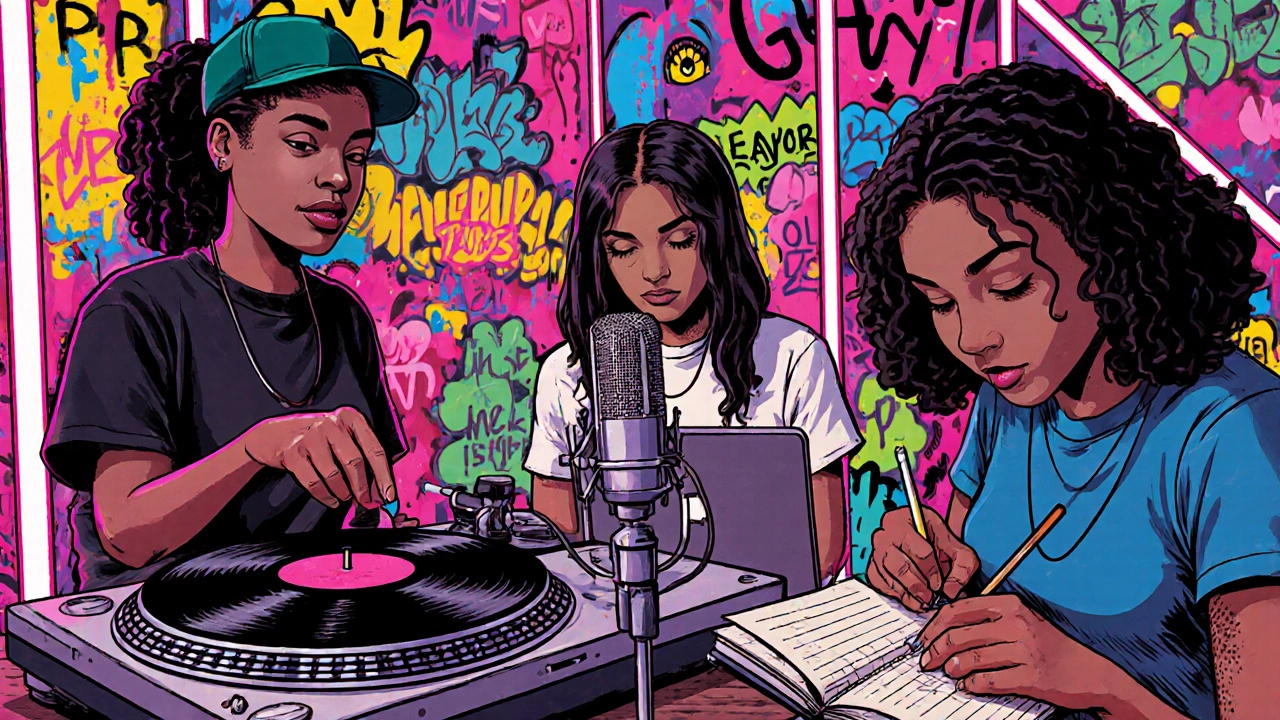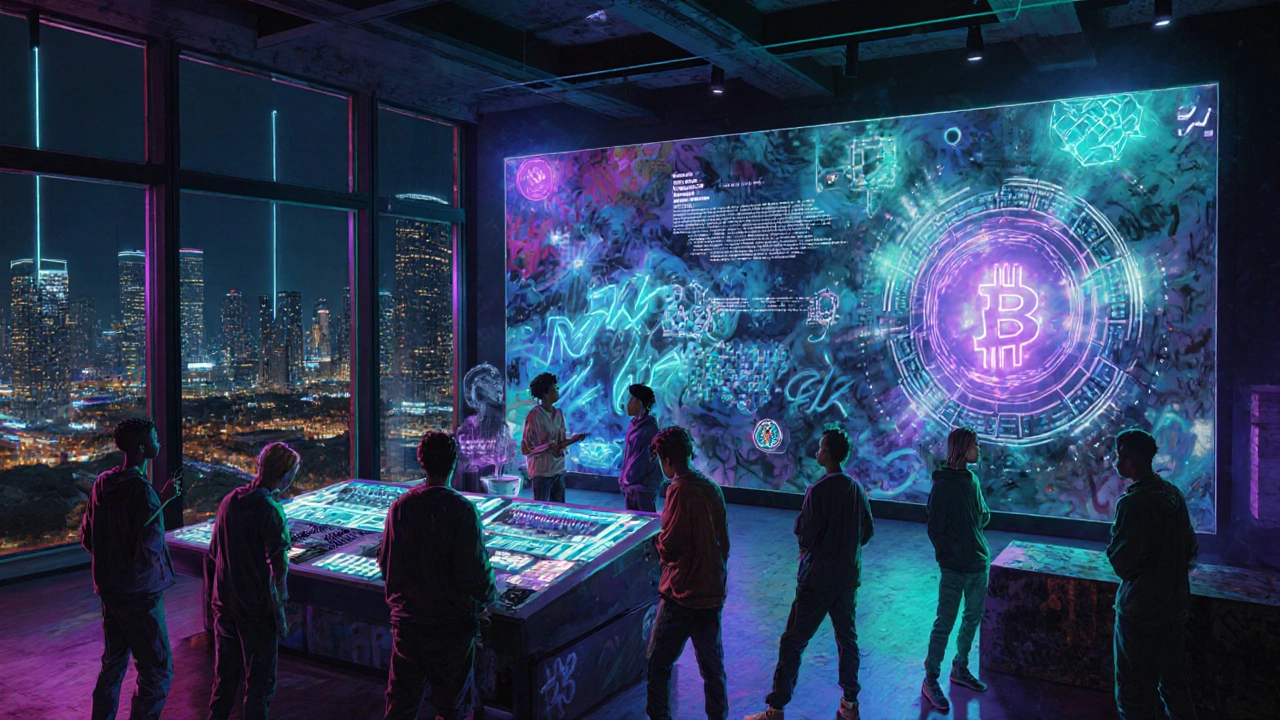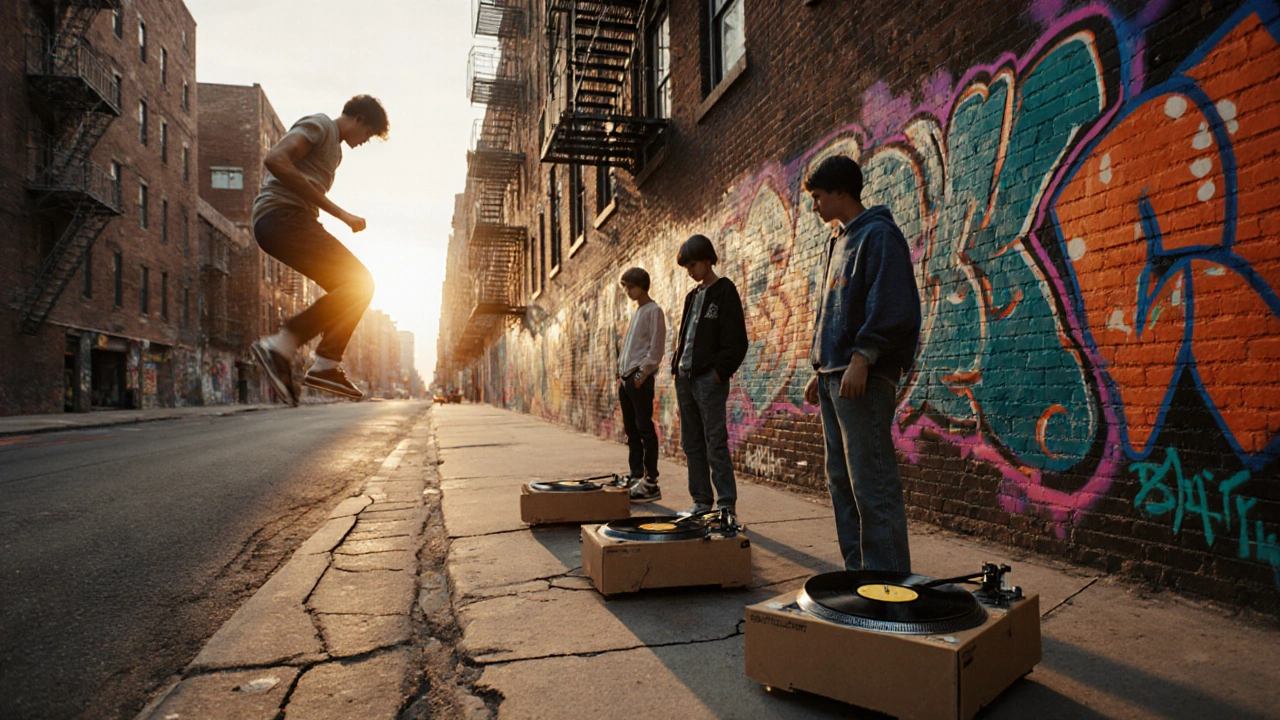Community Impact Estimator
Program Details
Estimated Impact
When people think of Hip Hop Music is a cultural movement that started in the Bronx in the 1970s, blending rhythmic spoken word (rap), DJing, breakdancing and graffiti, they often focus on the beats and the chart‑topping stars. What’s less obvious is how the same sound has become a lifeline for groups that have been pushed to the margins of society. This article shows exactly how hip hop acts as a tool for empowerment, from giving a voice to the unheard to building economic pathways that sidestep traditional gatekeepers.
Why hip hop became a voice for the unheard
In the early days, the African American community the primary birthplace of hip hop, faced systemic racism, under‑investment, and high rates of incarceration. The streets turned into studios: kids used turntables instead of textbooks, and verses turned into protest signs. That raw, DIY spirit meant anyone with a microphone could speak, no record label needed. The result was a flood of tracks that named police brutality, housing discrimination, and economic neglect-topics mainstream media ignored.
Hip hop’s reach beyond its roots
While the genre began in Black neighborhoods, it quickly resonated with other Latinx community large groups in urban centers who also faced language barriers, immigration challenges, and racial profiling. Artists like Cypress Hill and later, Cardi B, blended Spanish lyrics with English flows, turning bilingual rap into a cultural bridge. That cross‑cultural exchange helped immigrant youth see their struggles reflected in a global soundtrack.
Women carving space in a male‑dominated scene
For decades, women were peripheral in hip hop, but the genre’s activist core gave them a platform to demand respect. Figures such as Women in hip hop artists like Queen Latifah, Missy Elliott, and more recent stars like Rapsody who use their music to discuss empowerment, body autonomy and gender equity turned personal narratives into collective anthems. Their lyrics often tackle misogyny, wage gaps, and sexual violence, turning clubs into classrooms for gender politics.
Political rap that changed the conversation
When Public Enemy a groundbreaking 1980s group known for their confrontational lyrics and revolutionary imagery released "Fight the Power," they didn’t just make a hit; they forced radio stations to confront systemic injustice. Later, KRS‑One an educator‑rapper who coined the term ‘knowledge‑culture’ and championed self‑reliance, historically Black colleges and community activism introduced the concept of “hip hop as education,” showing that rap verses could double as syllabus notes.
Economic empowerment through the culture
Hip hop’s business model is built on ownership. Artists learned early on to control publishing, merchandising, and touring. The rise of independent labels-think Def Jam’s early days or today’s Dreamville-proved that grassroots financing could rival major label budgets. For many marginalized youths, starting a label, a clothing line, or a YouTube channel becomes a realistic path to financial independence.
Creative outlets that reinforce identity
Hip hop is more than music; it’s a four‑part art form. Graffiti the visual element of hip hop that turns city walls into canvases for social commentary gives street artists a legal‑gray way to claim space. Breakdancing the kinetic pillar of hip hop where dancers express resistance through intricate moves and battles offers at‑risk youth an alternative to gang activity, fostering discipline and community respect.

Comparison of hip hop with other activist music genres
| Genre | Key Themes | Typical Empowerment Tools | Notable Example |
|---|---|---|---|
| Hip Hop | Racial justice, economic self‑sufficiency, identity politics | Self‑produced beats, independent labels, community cyphers | "Alright" by Kendrick Lamar |
| Reggae | Anti‑colonialism, spiritual liberation, poverty | Roots concerts, dub production, Rastafarian symbolism | "Get Up, Stand Up" by Bob Marley |
| Punk | Anti‑establishment, DIY ethics, gender equality | Zines, self‑booked tours, squat venues | "Anarchy in the U.K." by Sex Pistols |
Real‑world impacts you can see today
1. Youth mentorship programs - Organizations like Hip Hop Education and The Hip Hop Project use rap workshops to improve literacy and self‑esteem among at‑risk kids.
2. Policy influence - Legislators have quoted hip hop lyrics when drafting police‑reform bills, proving that verses can shape lawmaking.
3. Economic hubs - Neighborhoods such as Atlanta’s “Hip‑Hop Triangle” have attracted investors, turning once‑neglected districts into thriving creative economies.
How to harness hip hop for community change
- Start a local cypher: Gather a small group of MCs, beat makers, and dancers to meet weekly. Record sessions and share them on social media to build momentum.
- Partner with schools: Offer after‑school workshops that blend lyric writing with history lessons, helping students see the connection between past struggles and today’s beats.
- Leverage online platforms: Use YouTube, TikTok, or SoundCloud to distribute original content. Consistent uploads can attract sponsorships and fund community projects.
- Create visual narratives: Encourage local graffiti artists to paint murals that celebrate community heroes, then document the process as a short documentary.
- Measure impact: Track attendance, literacy scores, or local business growth pre‑ and post‑program to prove the value of hip hop‑driven initiatives.
Potential pitfalls and how to avoid them
Commercialization can water down the activist edge of the genre. When major labels push “radio‑friendly” tracks, the original protest message may get lost. To stay true, keep a portion of your output independent, and always credit the community roots of your material.
Another risk is cultural appropriation. Non‑Black artists can amplify the message, but they must do so with respect-consult community elders, attribute influences, and avoid tokenism.
Future outlook: hip hop in 2030 and beyond
By 2030, technology will make music creation even more accessible. AI‑generated beats will lower barriers, while blockchain could ensure artists retain royalties. Those tools will likely expand hip hop’s reach into even more marginalized corners-rural towns, refugee camps, and online diaspora groups.
Yet the core will stay the same: a rhythm that lets the unheard speak, a culture that builds community, and a business model that rewards self‑determination.

Key takeaways
- Hip hop started as a grassroots response to systemic oppression, giving voice to the marginalized.
- Its four pillars-rap, DJing, graffiti, breakdancing-offer multiple creative entry points for empowerment.
- Economic independence is built through independent labels, merch, and digital distribution.
- When used intentionally, hip hop can reshape policy, education, and local economies.
- Staying authentic and community‑focused safeguards the genre’s activist heart.
How does hip hop differ from other protest music?
Hip hop blends lyrical storytelling with a DIY production model, allowing artists to self‑publish and keep profits. Other protest genres often rely on established record labels or live‑performance circuits.
Can non‑musicians still benefit from hip hop culture?
Absolutely. Graffiti, breakdancing, and DJing each offer skill‑building pathways-visual art, physical discipline, and technical audio knowledge-that empower participants beyond the stage.
What are effective ways to start a community hip hop program?
Begin with a regular cypher in a local community center, partner with schools for workshops that merge writing with history lessons, and document everything online to attract wider support.
How can hip hop artists maintain authenticity while gaining mainstream success?
Keep a portion of releases independent, stay involved in community projects, and consistently credit the cultural roots and social issues that inspired the music.
What role does technology play in hip hop’s future empowerment?
AI beat‑making tools lower production costs, while blockchain can secure royalties for creators, both expanding access for artists in underserved areas.

